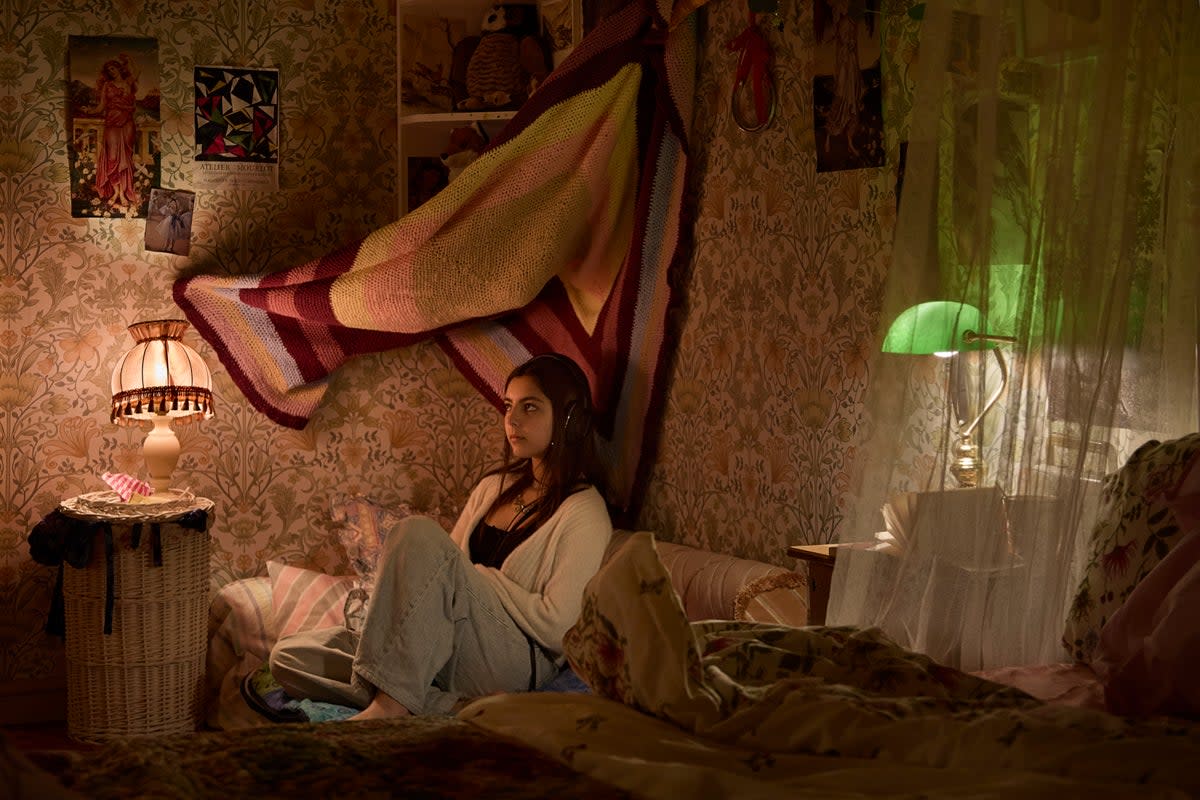Viola's Room by Punchdrunk review: stunning scenery, but a thin story

Would you go to SE18 to have Helena Bonham Carter whisper a gothic bedtime yarn in your ear? That’s effectively the offer of Punchdrunk’s underwhelming new show, in which the actress’s recorded voice, playing over headphones, guides small groups of barefoot punters through a series of scenarios from the story of a doomed princess.
There are exquisite miniature models, 2-D silhouette cutouts, lifesized stage-sets both folkloric and modern, all unpeopled. You and your fellow travellers are led to them through a labyrinth of corridors and antechambers, created in the immersive-theatre pioneers’ vast HQ in the former Woolwich Arsenal buildings.
The path in front of you gently illuminates as the way behind dims. Bonham Carter’s honeyed voice murmuringly tells you how orphaned Viola is compelled to dance to the point of exhaustion, beside a hawthorn tree in a maze, in the nights before her marriage to Prince Hugo.
The themes are transgression and possession at the point of sexual maturity, the language florid. The moon is “an orb rising, grotesquely pregnant”, for instance. I suspect there’s also a joke in the title’s initials, VR – Punchdrunk suggesting that their form of virtual reality is an experiential alternative to the online kind.
Conceived, directed and designed by company founder Felix Barrett, the 50-minute journey features moments of complete darkness, a crawl through a confined space, and a tight squeeze through a narrowing, padded passage like an upholstered birth canal. Not one for the claustrophobic, then.
Visually and atmospherically, it’s a work of rich detail, executed with elan. From a contemporary teenage bedroom to a gloomy tree festooned with ballet slippers, the human-scale designs are vivid, and the models are startlingly beautiful. Bonham Carter’s voice casts a spell and compels you onward, aided by a soundtrack that includes Massive Attack and Tori Amos.
Unfortunately the story itself, by Booker-shortlisted novelist Daisy Johnson, is a thin, by-the-numbers assemblage of darkly symbolic fairytale tropes with a sensual modern topspin. Barry Pain’s The Moon-Slave is cited as a source, but classic folk-tale The Twelve Dancing Princesses and its multitudinous offspring (including Powell and Pressburger’s classic film The Red Shoes) are obvious influences.
Above all, one really misses the epic scope and the thronging but aloof human crowds of the big, immersive shows with which Punchdrunk made their name. In the Burnt City or The Drowned Man you felt you were walking unseen through a society of ghosts. Here, you feel you’re being shown set designs for the netherworld they might inhabit.
Does Viola’s Room work on its own terms, and will it beguile Punchdrunk virgins? Up to a point, and perhaps. It’s a gorgeous miniature that you get to feel as well as see, a small adventure for the senses.
But in distilling “two decades of Punchdrunk’s immersive practice”, as the publicity material puts it, I fear Barrett has boiled away a lot of what made the company unique and great.
To Aug 18, punchdrunk.com


